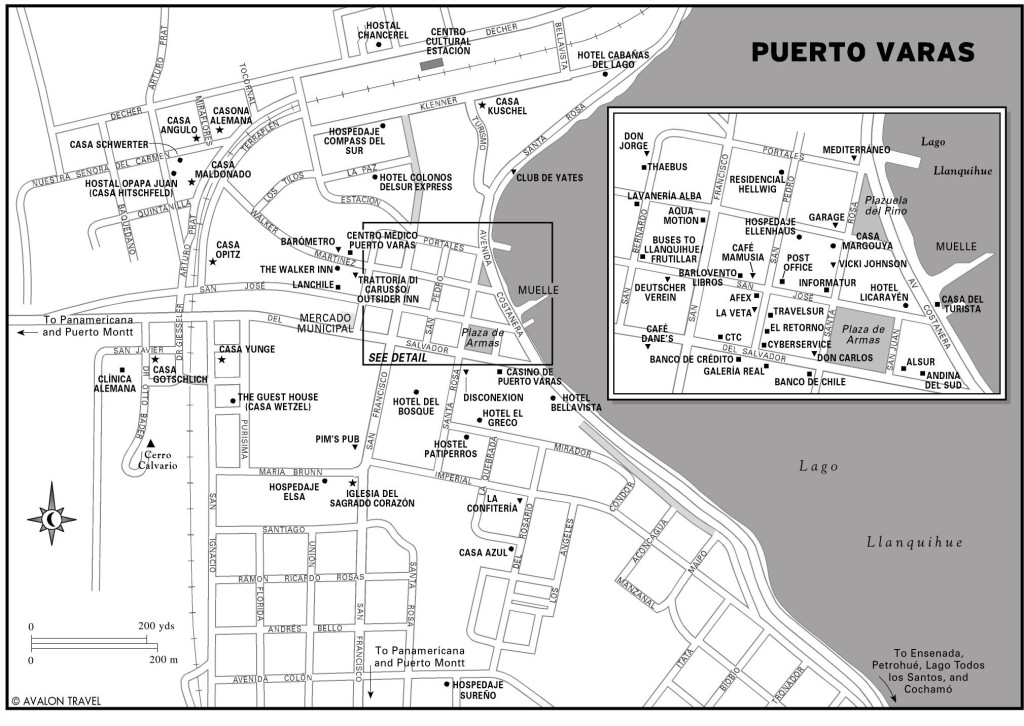North of Puerto Montt, picturesque Puerto Varas appeals to conventional tourists who loll on Lago Llanquihue’s beaches, admire its century-old mansions, sup in some of Chile’s best restaurants, and follow the bus-boat crossing to the Argentine resort of Bariloche. Increasing numbers of more adventurous visitors also appreciate the nearby Río Petrohué’s white-water rafting, Volcán Osorno’s snow-clad slopes, Cochamó’s wild backcountry, and other outdoor attractions. To the southeast, beyond Cochamó, a bridge over the Río Puelo also provides an alternative route to Hornopirén and the Carretera Austral.

Iglesia del Sagrado Corazón in Puerto Varas. Photo © Christian Córdova, licensed Creative Commons Attribution.
Varas’s architectural heritage, stemming from its German colonization as a 19th-century lake port, lends it its character. A recent building boom has resulted in nondescript housing developments on the outskirts, but it’s also brought more stylish infill downtown. Many visitors prefer Varas to nearby Puerto Montt, and not just as a base for excursions.
Other than the lake and its inspiring views toward Volcán Osorno, Varas’s main attraction is its Germanic colonial architecture. The most imposing single structure is the Iglesia del Sagrado Corazón (1915), a national monument whose steeple soars above the town from the corner of San Francisco and María Brunn. When lit at night, it’s best seen from the corner of Imperial and Santa Rosa.

Puerto Varas
Numerous private residences are national monuments, mostly in residential neighborhoods northwest and west of downtown. The city has recently emphasized its architectural heritage by erecting explanatory signs with brief histories alongside many of these residences. Examples include the 1910 Casa Kuschel (Klenner 299), the 1914 Casona Alemana (Nuestra Señora del Carmen 788), the deteriorating 1915 Casa Maldonado (Quintanilla 852), 1910 Casa Jupner (Miraflores 96), 1913 Casa Opitz (Terraplén 861), 1932 Casa Gotschlich (Dr. Otto Bader 701-05), and 1932 Casa Yunge (San Ignacio 711).
A couple of impressive nonmonuments serve as accommodations: the 1941-1942 Casa Schwerter (Nuestra Señora del Carmen 873) and the 1930 Casa Hitschfeld (Arturo Prat 107).
For some years after the Santiago-Puerto Montt railroad closed, the former Estación del Ferrocarril (Klenner s/n) sat empty. But today, it’s been revamped as the Centro Cultural Estación, a gallery and events center. After a brief revival, rail service has been suspended, but work is underway on the tracks and sleepers.
Excerpted from the Fourth Edition of Moon Patagonia.